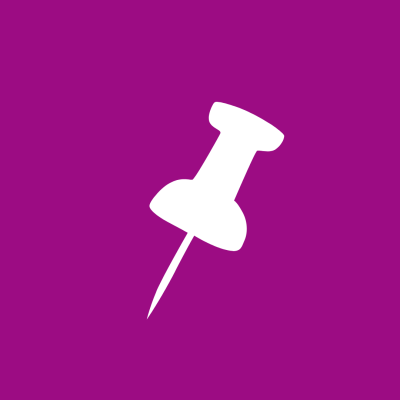All Things Admin Joins ASAP. Learn More ›
10 Steps to Organization
October 15, 2020

Do a little self-monitoring, with an eye to minimalism
I know; this can be difficult when you spend so much of your day taking care of others. As a starting point, spend a day or so consciously monitoring which items you truly need to access repeatedly over the course of a day. Apart from the clear necessity for various pieces of hardware – computer, monitor(s), and perhaps a label printer, calculator and/or scanner – on or beneath your desk, what else do you need? A notebook or iPad, pen, pencil, highlighter, and adhesive “sign here” or other such indicators for contracts or materials for your executive’s attention?
If your desk contains a number of objects that remain untouched after a couple of days, consider recycling or discarding them, or assigning them to a different locale from which you can still access them as needed.
Schedule a purge
Don’t wait until the next VIP visit, office event or the day before your next holiday. Instead, right after reading this article, go to your online calendar and schedule some time for a cleanup. If this is too big a task to accomplish in a couple of hours, schedule two or three blocks of time within the next month. Don’t think of this as losing time; you’ll gain efficiencies in the process.
Schedule recurring appointments so you can maintain a clutter-free environment
Don’t wait until the next VIP visit, office event or the day before your next holiday. Instead, right after reading this article, go to your online calendar and schedule some time for a cleanup. If this is too big a task to accomplish in a couple of hours, schedule two or three blocks of time within the next month. Don’t think of this as losing time; you’ll gain efficiencies in the process.
While you’re in your calendar, also schedule a series of brief, recurring appointments (15-minute blocks can do wonders) to maintain a tidy environment.
Shred on a regular basis
Some offices run with scheduled collections of materials to be shredded. If you have access to a shredder within your office, though, you’ll have a tidier and more secure environment if you take care of shredding on a daily or as-needed basis. It’s also a good reason to get away from your desk and stretch your legs.
A paperless office?
The fact that many of us are progressing toward paperless operations doesn’t preclude others from sending us more, on a daily basis. Some EAs scan all incoming hard copy correspondence and maintain ready access to it in a data base. Many assistants, though, still function with stacks of documents. Try, wherever possible, to apply that same rule of thumb used with e-mail correspondence: handle incoming correspondence once, or as minimally as possible.
Consider a trio of suspended file holders within your desk drawer or filing cabinet that you can dedicate as a short-term holding spot for materials yet to be filed, read, or requiring action. Book a recurring task or appointment with yourself into your e-calendar, so that you dedicate a set amount of time each day or week to turn to such materials in a timely manner and minimise the contents of such files.
A sticky-free monitor
This may take some adjusting if you rely on stickies for must-do items and time sensitive matters not to be forgotten. To wean yourself away from stickies, invest a bit of time exploring your e-calendar’s capacities; use Outlook or whatever your employer provides to provide electronic reminders of such matters. Alternately, turn to a “tickler” file or a multi-tabbed, “1-31” sorter or book that you then check each day so you don’t lose sight of time-sensitive matters.
A place for every list
Do you have lists or charts with key information tacked up to your wall? A couple of decades ago, I did, but couldn’t stand the cluttered look of papers all over a bulletin board. In the late 90s, having landed a position where I was responsible for keeping the administration of financial and HR matters for a group of 90+ people on track, I took a look around one day at the multitude of lists on my desk and wall, and decided enough was enough. I recalled my high school and college days, when I worked at GE. The sales reps there all had handy multi-sleeved organisers for their desks; they could readily flip through them for access to parts numbers, pricing and so on.
I ordered a 10-sleeve catalogue rack for my desk, inserted 20 key documents inside the plastic-protected sleeves, and haven’t been without such a beast since. As others in the institution saw the merits of this system, I became personally responsible for a run on orders of such goodies. I routinely keep an innocuous document inside the front cover sleeve.
iPad versus notebook or steno pad
Years ago, eschewing the traditional steno pad, I adopted the habit of maintaining a compact, hard cover book for use in planning sessions and to record salient notes arising from phone calls and visitors to my office. Such books eliminated the need for message pads, and served as dated references to which I could subsequently turn as needed; over time, I subsequently shred the books’ pages. Recently, while I still maintain a book, I’ve been relying on my iPad in meetings where I’m a participant rather than a recorder; it’s a simple matter to then transfer key notes by e-mail rather than duplicating entries on my computer. My thinking is that this will also reduce the number of books I keep and temporarily store before ultimately dedicating additional time to shredding the contents.
Schedule routine sweeps of your “catch all” drawer or cabinet
Use your e-calendar as a tool to remind you to periodically sort out whichever drawers contain a jumble of supplies. If you dedicate 10 to 15 minutes every four to eight weeks on such a task, you’ll soon realise that much of the drawer’s contents go unused. Return unneeded stationery products to the supply room.
Decor: remember this is a place of business
Preferences as to whether to display photos of family members and pets will vary among assistants; some maintain framed photos or upload them as screen savers; a couple of assistants I know are artists who have enlivened their offices with their paintings. Assess what the personal touches in your office say about you, and the messages you’re conveying.
Delegate or recycle
Malcolm Forbes said, “If you don’t know what to do with many of the papers on your desk, stick a dozen colleagues’ initials on them and pass them along. When in doubt, route.” After removing tongue from cheek, you may want to consider why you’re holding on to certain documents; are they relevant, or should they be archived, re-routed for review or action, or shredded or recycled?
Looking for more digital organization tips? Download these tips for staying digitally organized!
About the Author: Shelagh Donnelly educates and inspire assistants on topics ranging from meetings and minutes to business acumen, cybersecurity and working with boards. She helps assistants nurture their adaptability, productivity and resilience in order to enjoy the career and continue to add value even as roles evolve. An international speaker, Shelagh worked with C-level executives for more than 25 years and is recognized for her governance expertise. Shelagh founded her globally read Exceptional EA website in 2013, and is the author of the upcoming book, The Resilient Assistant.
Join the Conversation
Welcome to the ASAP Circle, a community platform for peer-to-peer conversation on trending topics, professional challenges, and shared experiences. We even have designated spaces for weekly Tuesday Coffee Breaks.









